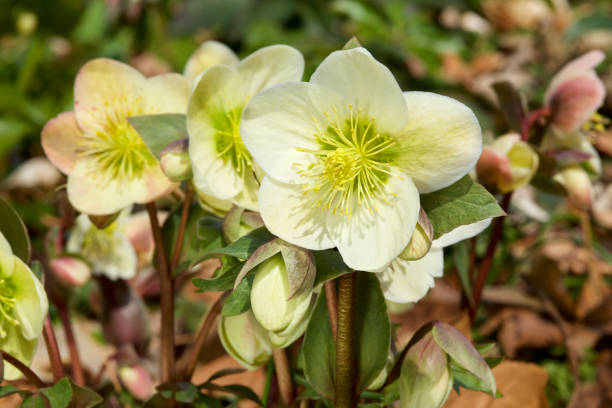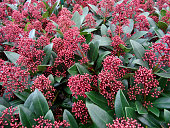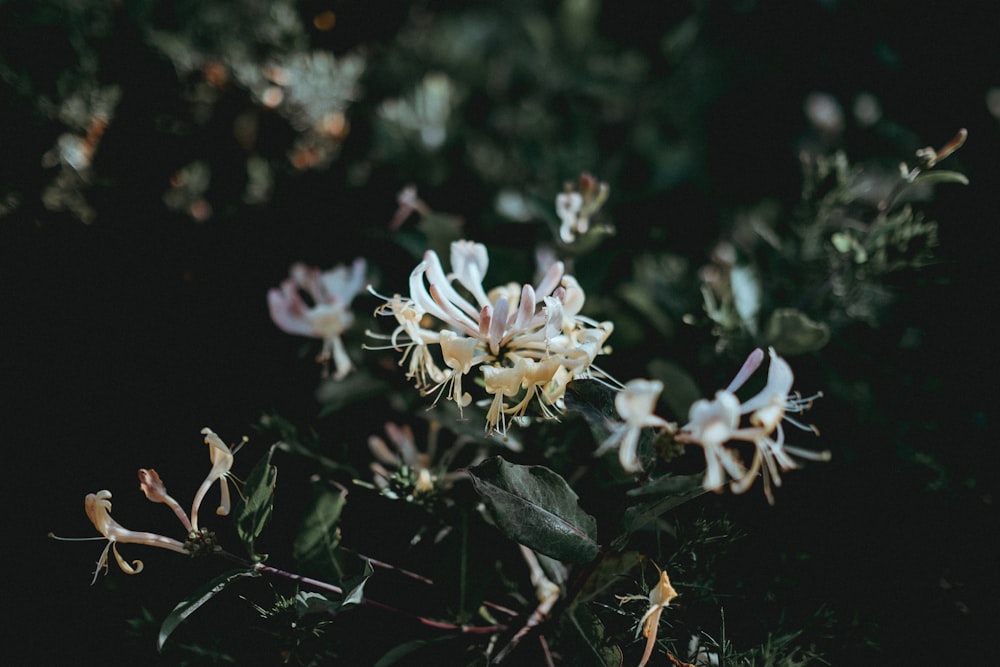A wet day which gradually cleared to blue skies and sunshine in the Brighton garden. A good omen for Friday Group’s 2018 gardening sessions, we hope. For plant identification this week, Bridge showed us a number of plants with especial interest for the winter garden.
Plant Id.
Helleborus argutifolius

Also known as the Corsican hellebore, this evergreen herbaceous perennial has serrated leaves and beautiful pale green nodding flowers. It is in the Ranunculaceae family, and is therefore related to both clematis and Japanese anemones. It is slug resistant and therefore very useful to gardeners!
Sarcococca confusa
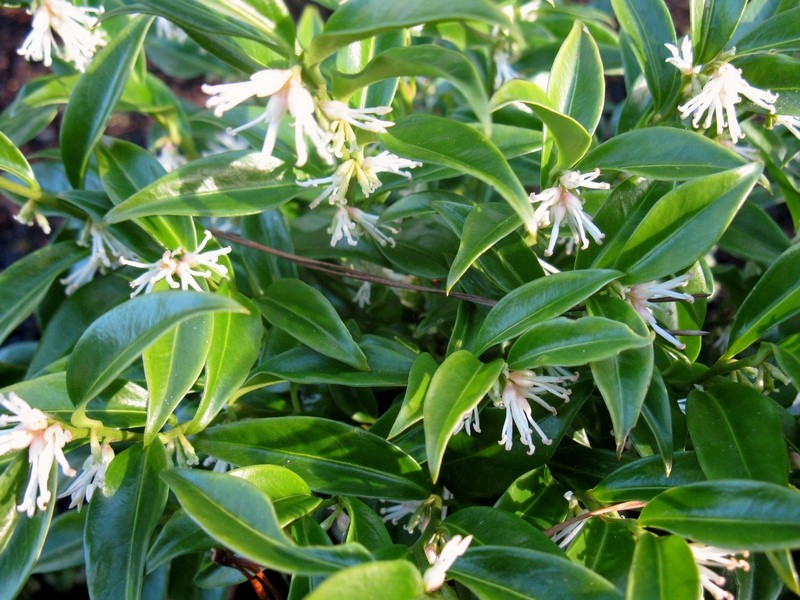
This useful evergreen shrub is lovely in the winter garden with its fragrant white flowers and shiny dark green leaves. “Christmas box” also produces shiny black berries and is good in a pot.
Erica carnea

This winter flowering heather is tolerant of chalk as well as acidic soils, making it a good choice in many areas. Purple and white/silver varieties can look very attractive together. If it gets leggy, the plant can be planted in a deep hole in the spring to encourage the production of rooted cuttings. This process is known as “dropping” heather.
Colchicum autumnale

Commonly known as autumn crocus – or “naked ladies”, because their flowers emerge long after the leaves have died back – these are dwarf deciduous perennials and are poisonous if eaten.
Galanthis nivalis

Snowdrops are one of the first bulbs of the year to bloom and spread mainly through bulb division, especially in woodlands. They are perennial flowering plants and there are some very distinctive and sought after named forms collected by “galanthophiles”. Flower heads can be single or double.
Cyclamen coum
A tuberous hardy herbaceous perennial which has handsome heart-shaped leaves and beautiful flowers – ideal under shrubs and trees. Where happy, they will self-sow and create a carpet of flower. They also look good in shallow “pans”. Slugs and snails tend to leave them alone.
Iris foetidissima
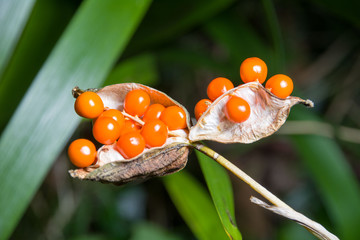
The Gladwyn or “Stinking” iris has rather dull pale mauve flowers but attractive bright orange (poisonous) seeds are produced from its seed pods in the autumn and remain through the winter months.
Helleborus niger
Commonly called the Christmas rose or black hellebore, (its seeds are black), this semi-evergreen flowering perennial is also part of the buttercup family (Ranunculaceae). All parts of it are poisonous. Helleborus x ericsmithii is a jewel of a plant created by Eric Smith many years ago, from a cross with Helleborus niger. It has large white flowers tinged with pink, but is worth growing for the silvery sheen of the foliage alone.
Skimmia japonica “Rubella”
A popular compact evergreen shrub in the winter garden, “Rubella” (the male plant) has dark red flower buds which persist through the winter then open in the spring. Best on acid soil or in a pot with ericaceous compost. Wakehurst Place holds the National Collection.
Viburnum bodnantense “Dawn”
This upright deciduous shrub is a good choice in the winter months as it bears deliciously fragrant dark pink flowers on bare stems from November through to March. Viburnum tinus is a commonly seen shrub, easy to grow, but can look untidy unless kept well pruned.
Lonicera fragrantissima
A winter-flowering shrub with the most wonderful, delicate, slightly lemony, perfume.
Vinca major
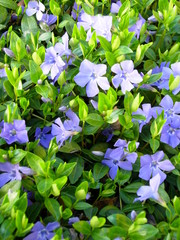
A vigorous low-growing evergreen plant, the long-flowering periwinkle is frequently chosen for its ability to act as effective ground-cover.
Daphne odora aureomarginata
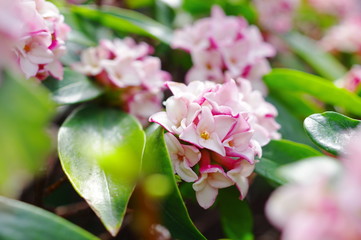
A compact evergreen shrub with dark green glossy leaves edged in yellow. It has the most wonderful scent and is highly rated by Bridge. Spendy, but worth it!
Iris unguicularis
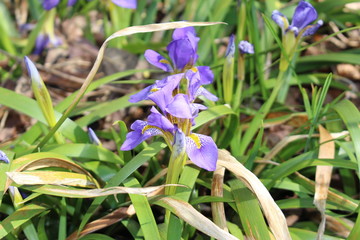
The Algerian iris is a plant much recommended by Bridge. It grows from a rhizome to reach about 30cms in height and has scented deep violet flowers.
Cornus sanguinea “Midwinter Fire”
Dogwoods are a terrific asset to the garden in the winter months when their stems catch the light. Plant in groups in full sun for best effect. “Midwinter Fire” is a variety which has bright orange-red and yellow stems. Cut back in spring.
Clematis cirrhosa “Freckles”
- This evergreen woody climber has bell-shaped flowers produced from late autumn onwards, cream/pale yellow in colour speckled with bright maroon “freckles”. Attractive seed-heads follow.
Jobs in the garden
- Weaving a fence for protection and decoration
- Planting up bulbs in bowls with compost, grit and adding moss on top for decorative purposes
- Potting on hardy annuals (calendulas in this case) into 1 litre pots
- Upgrading the Bug Hotel to a 5-star establishment
- Checking over pulmonarias in pots before planting them out into the garden for spring flowering
- Potting on sweet peas in the greenhouse.

